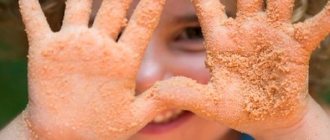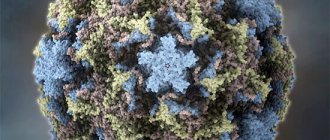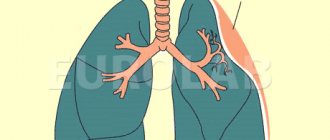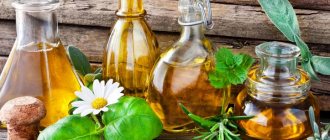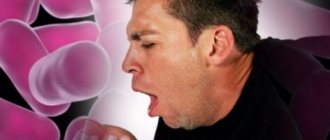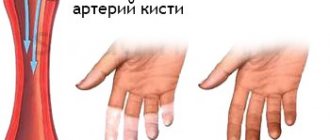Intestinal colic is a spasm of the smooth muscles of the intestines, manifested by cramping pain that either increases or subsides. Colic can be functional (temporary, reversible, caused by external causes) or organic (caused by inflammation or injury, damage or obstruction of the intestine). This is not a disease, but a symptom, the second most common after headache. Colic that occurs for the first time requires a medical examination, during which it becomes clear what actually happened.
According to statistics, up to 20% of the entire population of the planet suffers from intestinal colic, and in half of them a clear cause cannot be found.
What is intestinal colic
Acute spasmodic pain in the abdomen is usually observed in a young child (sometimes a teenager), but intestinal colic is also common in adult men and women. In adults, acute pain in the intestines warns of a malfunction of the digestive organs. The cause of the attack can be various pathologies of the gastrointestinal tract, as well as stress and age-related changes.
The term “intestinal colic” in adults refers to several symptoms of acute abdominal pain that are common to many diseases. Acute pain can be paroxysmal in nature or appear as spasmodic pain of increasing intensity.
Classification
Abdominal cramps can be:
- Physiological . They arise against the background of normal, natural processes occurring in the human body. Physiological spasms are not associated with pathological processes or diseases and do not require special treatment.
- Pathological . They arise against the background of problems associated with functional disorders of human organs and systems.
Abdominal muscle spasms are divided into:
- Clonic . There is an alternation of periods of muscle contraction and relaxation. Clonic spasm occurs in renal failure , uremia and intoxications of various etiologies.
- Tonic . Characterized by prolonged spasms and tension in the muscle corset. Tonic spasm is observed in osteochondrosis , a disorder in the autonomic nervous system, after prolonged static stress, as well as after traumatic injury.
Factors that provoke intestinal colic
Intestinal colic is often combined with the concept of “acute abdomen”; such pain may indicate functional intestinal disorders or deep organic lesions.
The following factors can contribute to the appearance of intestinal colic:
- diseases of the digestive system (gallbladder, liver, pancreas, gastritis, ulcers). Such pathologies are accompanied by indigestion if, after eating, some time later, semi-digested food penetrates the small intestine, causing it to spasm.
- unbalanced and irregular nutrition, overeating, snacking.
- consumption of stale food, cold dishes or foods during the preparation of which fermentation occurs (yeast dough products, kvass, pickled apples, sauerkraut).
- food and drug poisoning.
- intestinal infections caused by the penetration of pathogenic microbes into the body (dysentery bacilli, salmonella). These microorganisms produce toxins when they get into food, and when consumed, food toxicosis occurs - toxic infection. Such intestinal infections include salmonellosis, dysentery, and cholera.
- nervous tension, stress. The appearance of such a symptom is acceptable due to nervousness, often in a particularly impressionable person.
- intoxication with salts of heavy metals (lead is the most dangerous). Chemical production workers who are exposed to toxic substances for a long time are at risk. Once in the body, lead salts provoke the so-called “lead” colic.
- helminth infection. Parasites that live in the intestines constantly affect its walls and mucous membranes, irritating the nerve endings.
- influenza or ARVI. Viral infections affect not only the respiratory system, but also the digestive system, settling in the lymph nodes of the peritoneum, provoking their inflammation. These nodes are located in the mesentery of the small intestine and cause spasmodic pain, irritating it. Colic can be combined with indigestion (diarrhea) and manifestations of infection in the respiratory tract (runny nose, redness and sore throat, cough). Pain in the abdominal muscles can be quite severe and worsen with movement.
- intestinal obstruction, malfunction, stretching of intestinal loops, mechanical obstruction (adhesions, tumor), accumulation of feces. Discomfort may occur due to heavy lifting and heavy physical activity.
There are many factors that can cause intestinal colic, so only a specialist can determine the causes of this symptom and prescribe precise treatment that can eliminate pain and alleviate the patient’s condition.
Treatment
Photo: stopalkogolizm.r
Treatment of colic should consist of eliminating the cause of its occurrence, that is, treating the underlying disease. Therefore, in no case should you ignore your condition, but you should immediately seek help from a doctor if pain in the abdominal cavity occurs. In the absence of necessary treatment, the risk of complications increases, which is why it is important to contact a specialist in a timely manner.
For symptomatic pain relief, analgesics and antispasmodics are used. It is important to note that the use of narcotic substances is prohibited, as they increase spasm of smooth muscles, which can lead to increased pain. In this regard, non-steroidal anti-inflammatory drugs (NSAIDs) with pronounced analgesic activity are prescribed to relieve pain. The action of antispasmodics is aimed at eliminating muscle spasm, which is the source of pain.
Symptoms of intestinal colic
The most severe signs of intestinal colic are attacks of unbearable acute pain, which is accompanied by spasmodic pain. The most severe pain is recorded in the navel area (umbilical pain), in case of stomach diseases it can radiate to the epigastric region, upward, in other cases the pain will radiate downwards. The pain can quickly increase and radiate to the testicles (in men) and to the genitals (in women).
On palpation, the patient feels severe pain, but there is no tension in the abdominal muscles. The pain can last for hours and even days; it is never short-lived. The cramping pain may subside slightly, but other signs may appear that accompany the deterioration of the patient's condition (constipation, gas retention, abdominal pain). In the acute form of gastritis, colic can be supplemented by dyspeptic symptoms - belching, vomiting, nausea, bloating.
Diarrhea with mucus may appear during bowel movements. The patient experiences weakness, aversion to food, and general health deteriorates.
Acute intestinal obstruction may begin to develop from intestinal colic. Intense, excruciating, cramping pain is felt throughout the entire abdominal area, and vomiting occurs. Further, gas and stool retention is possible, abdominal bloating is observed, and a sharp drop in pressure is possible.
Doctors distinguish several forms of intestinal colic, the symptoms of each will be supplemented by other signs. Depending on the pathology that caused intestinal colic, additional symptoms and, accordingly, treatment will differ.
| Disease | Additional symptoms | Primary care | Treatment |
| Gastritis, cholecystitis | Belching, nausea, vomiting, loss of appetite, pain - tingling in the epigastric region | Refusal of food, taking painkillers - “Spazmalgon”, “No-shpa” | Treatment by a gastroenterologist to avoid attacks |
| Intestinal obstruction | Constant increase in attacks, rapid deterioration in general condition, loss of strength, decreased blood pressure, lack of stool, bloating, vomiting | A cool heating pad is placed on the pain area | Immediate surgery required |
| Infectious diseases | Severe diarrhea, increased temperature and blood pressure, signs of intoxication, general weakness | Taking Smecta, Regidron, a cold heating pad on the pain area, drinking plenty of fluids | Treatment in the infectious diseases department is required. The patient's condition may be life-threatening |
| Lead poisoning | Gray complexion, gum ulcers, gray plaque on the gums, teeth, dizziness | The patient's condition may be life-threatening; emergency medical attention is needed | |
| Appendicitis | The attacks intensify, the pain covers the right side | Cold heating pad on the pain area | Surgical intervention |
| Poisoning | Pale skin, watery diarrhea, nausea, vomiting, dry skin, rare urination | Drink plenty of fluids, take activated carbon, gastric lavage | Treatment under the supervision of a doctor at home |
| For helminthiasis | Itching, burning in the anus, during sleep - teeth grinding, allergic rash, sudden weight loss | Warm bath, use of “No-Shpa”, “Spazmalgon”, “Becarbon” | After pain relief - treatment of helminthiasis |
Medicines
Photo: businessinsider.com
To relieve colic, painkillers are used, namely non-steroidal anti-inflammatory drugs, which have the greatest analgesic activity. Such representatives of this group include:
- analgin. The onset of action of the drug when administered intramuscularly occurs after 15–20 minutes, the maximum effect is achieved after 1 hour;
- ketorolac is the most powerful analgesic from the group of non-steroidal anti-inflammatory drugs. When administered intramuscularly, the effect of the drug begins after 10 - 15 minutes, the maximum effect is achieved after 30 - 60 minutes from the start of administration;
- baralgin. The drug not only has an analgesic effect, but also helps eliminate muscle spasms, which plays a huge role in relieving an attack of colic. The drug begins to act after 15 - 20 minutes, the maximum effect is achieved after 1 - 1.5 hours.
Narcotic analgesics are not used to relieve an attack of colic, since their action increases spasm of smooth muscles, which leads to increased pain. However, in cases of severe pain that does not decrease under the influence of non-narcotic painkillers, the use of promedol is allowed, which causes spasm of smooth muscles to the least extent. The drug begins to act fairly quickly when administered parenterally, and the duration of action lasts for 2–4 hours. Contraindications to the use of Promedol occur if the patient is allergic to the drug, a condition accompanied by respiratory depression, and Promedol should be used with caution if the patient has an addiction to opioids.
The most commonly used antispasmodics are:
- papaverine. The drug has an antispasmodic effect by reducing the tone and contractile activity of smooth muscles. In addition, papaverine dilates blood vessels, which leads to improved blood circulation;
- drotaverine It also reduces the contractility of smooth muscles and reduces its tone, resulting in the desired effect in relieving an attack of colic. The drug is well tolerated by people of different age groups; there are practically no contraindications for use or side effects that occur while taking the drug.
Symptoms of various localizations of colic
The symptoms of colic are distinguished according to the location of the pain. It often happens that pain initially appears in another part of the peritoneum, and if left untreated, it spreads to the intestines.
With rectal (rectal) colic, a painful false urge to defecate occurs.
With appendicular colic, the pain is located on the right side and radiates to the iliac region. Usually appears in the first hours of the formation of acute appendicitis and is characterized by severe pain of an increasing nature.
With renal colic, intense periodic paroxysmal pain is felt, which radiates to the groin, tailbone, genitals, lower back, while nausea and a rare complete absence of urination are observed. The pain worsens with movement. Blood pressure drops, temperature rises significantly to +39. At the peak of the pain syndrome, loss of consciousness, convulsions and fainting may occur. Renal colic can be caused by: acute or chronic inflammation (pyelonephritis), urolithiasis, tuberculosis and kidney tumors.
With hepatic colic, pain appears in the right hypochondrium, can radiate to the shoulder, to the shoulder blade, bitterness is felt in the mouth, nausea occurs and vomiting with bile is possible. Hepatic colic is caused by cholelithiasis or acute cholecystitis.
With pancreatic colic, pain first appears in the left hypochondrium, and then becomes encircling, spreads throughout the body, accompanied by an autonomic reaction in the form of nausea, vomiting, and possible diarrhea. It appears in pancreatic pathologies. This condition can be caused by pancreatic tumors or acute pancreatitis.
Lead colic. Clinical manifestations of lead poisoning are characterized by sharp cramping pain, pain in the abdomen, muscle tension in the abdominal wall, high temperature (up to 39°C), bleeding (hemorrhagic syndrome) from the gums, and the presence of gray plaque between the gums and teeth.
If you suspect these types of colic, you should urgently call an ambulance. Primary aid is as follows: loosen the patient’s clothes, put a cool heating pad on the stomach, call an ambulance.
If the cause of colic is known, then take the drug prescribed by the doctor; in other cases, no medications should be given to the patient until the doctor arrives.
How to relieve symptoms at home
Colic can be caused by various reasons, so it is not recommended to apply a heating pad to the stomach or give an enema before the doctor arrives. This can blur the clinical picture and complicate the patient's condition. Especially when there is a suspicion of intestinal obstruction or appendicitis, and there is no way to distinguish it from other pathologies.
If the doctor determines that the patient has simple intestinal colic, the following actions are allowed:
- take sedatives if the attack is caused by stress;
- take 2 tablets of “No-shpa”, washed down with mint decoction, or a sachet of “Smecta”, having previously dissolved it in 100 ml of water.
- Apply a heating pad with warm water to the groin area. This helps relax muscles and relieve spasms.
- after this, do an enema with a decoction of lemon balm or mint. As a rule, after the intestines are freed from feces and gases, the pain subsides.
Chamomile decoction or immortelle decoction will help relieve intestinal colic.
You can take several tablets of Bellalgin, Besalol, Becarbona, or administer rectal suppositories with belladonna extract.
After such procedures, the patient must refuse to eat for half an hour; he is allowed to drink warm unsweetened tea with crackers. In the following days, you should refrain from eating foods that cause excessive gas formation.
Causes
- eating stale or low-quality food - through increased peristalsis, the body expels harmful substances;
- excessive formation of intestinal gases;
- motility disorders in people with increased visceral sensitivity;
- space-occupying formations (most often tumors) of the abdominal cavity;
- postoperative adhesions and scars;
- sigmoid colon volvulus;
- dolichosigma or pathological elongation of the sigmoid colon;
- narrowing of the lumen due to active inflammation;
- Ogilvy's syndrome - false blockage of the colon due to impaired innervation;
- acute appendicitis and other life-threatening conditions, collectively called “acute abdomen”;
- lead poisoning.
Diagnosis of intestinal colic
To make a correct diagnosis, you need to undergo a full examination. First, the doctor finds out the history of the disease, listens to the patient’s complaints about the location and nature of the pain and additional symptoms.
The doctor examines the patient and palpates the abdomen. A pathological cause of colic is indicated by tension in the abdominal wall muscles and soreness.
To make an accurate diagnosis, the patient should undergo the following examinations:
- stool occult blood test;
- Analysis of urine;
- biochemical and general blood test;
- coprogram;
- Ultrasound of the abdominal organs. This will make it possible to determine the pathology causing intestinal colic;
- colonoscopy;
- CT. The study is done if there is a suspicion of a tumor or trauma to the intestines and internal organs.
- sigmoidoscopy. Using an endoscope, a visual examination of part of the sigmoid and rectum is performed.
Abdominal cramps in a child
Newborns and infants often experience bloating and painful colic in the abdomen . Having arisen in the first weeks of life, spasms can bother the child for several months. Children become restless, capricious, refuse to breastfeed and instinctively tuck their legs towards their stomach. The pain syndrome occurs due to the immaturity of the digestive system and goes away on its own as the child grows older.
The main causes of abdominal pain in a child:
- infectious diseases;
- allergic responses to food;
- intestinal disorders;
- inflammation in the urinary tract.
Muscle spasms and loose stools can be the result of stress or overexertion. Similar reactions are observed after high-intensity physical activity.
How to treat intestinal colic
Drug treatment will depend on the cause of intestinal colic.
When these are diseases such as stenosis (narrowing) of the urinary tract, pyelonephritis, cholecystitis, urolithiasis or cholelithiasis, hepatitis, tumors, then the diseases themselves must first be treated directly.
When colic is caused by a severe intestinal infection, the patient needs to be hospitalized and treated in an infectious diseases hospital. If acute intestinal obstruction or appendicitis is diagnosed, surgical intervention is performed. When the cause of colic is a parasitic infection, treatment for helminthiasis is carried out.
To get rid of pain, antispasmodics are used: “Drotaverine”, “Notensil”, “Becarbon”. They may prescribe injections of Papaverine, Atropine, and Diphenhydramine as first aid.
After pain relief, the patient is under the supervision of a doctor, since for further therapy it is important to know how the patient will feel after colic. If the cause of colic is due to dietary errors, then after defecation and release of gases, the colic stops and the patient feels relief.
Toxic infection or intestinal infection requires serious treatment. A course of antibiotics is prescribed: Levomycetin, Gentamicin and intestinal antiseptics: Furazolidone, Biseptol. In particularly difficult situations, saline solutions, glucose, blood plasma, and vitamins are used as intravenous infusions.
Intestinal colic, caused by influenza and acute respiratory infections, is treated with antispasmodics, vitamins and activated charcoal.
For vascular colic, which is caused by insufficient blood flow to the abdominal organs, medications are taken that improve the patency of the arteries.
Treatment of intestinal colic with folk remedies
If colic is caused by parasitic infections, the following traditional medicines are suggested:
- pumpkin seeds. To 2 tbsp. Add 300 ml of boiling water to spoons of pumpkin seeds (crushed), add 2 teaspoons of sugar and drink the infusion for 5 days.
- tansy flowers. 1 tbsp. Pour boiling water (1 glass) over a spoonful of tansy, leave to infuse and drink throughout the day. Course - 2-3 days.
- lavender oil. It relieves pain and spasms, calms the nervous system. Place 5 drops of oil in a small amount of water and drink.
- decoction of white wormwood. Pour 100 g of raw material with cold water and leave for 2 days. Then simmer over low heat for about an hour. The finished broth is filtered and 400 g of honey is added to it. Place it on the fire again and cook until the mixture thickens. Drink 1 tbsp decoction. spoon 4 times a day.
- ginger tea. Drink to relieve colic. For tea, take half a teaspoon of ginger root per 1 glass of hot water. Drink 2-3 cups a day.
- fresh cabbage juice. It relieves colic well. Drink cabbage juice after meals, diluting it with water.
- an infusion of cinquefoil root, nettle leaves, alder cones, thyme, St. John's wort, and lemon balm helps with intestinal colic if it is accompanied by diarrhea. All components are taken in equal quantities, 1 tbsp. Pour a spoonful of the mixture into a glass of boiling water and leave. Take half a glass three times a day before meals - morning, afternoon and evening.
Structure of the gallbladder and bile ducts
To understand the mechanism of spasm development, it is necessary to study the structure of the gallbladder. The gallbladder is an internally hollow organ, up to 15 cm long and about 5 cm wide. The average capacity of bile is 60-80 ml, but if necessary, the bladder can stretch up to 200 ml.
It is located directly under the liver, not far from the duodenum, in the area of the right hypochondrium. In its normal state, it cannot be felt by palpation, and its size and condition can be determined using ultrasound.
The walls of the organ consist of three membranes:
- serous (external);
- muscular (medium);
- mucous membrane (internal).
The main bile duct is formed as a result of the connection of the hepatic and cystic ducts, and consists of several sections. It is through the ducts that bile is removed from the liver, enters the gallbladder and is subsequently released into the intestine.
When food enters the stomach, an involuntary contraction of the gallbladder occurs, which opens the main valve, then the sphincter, after which the bile enters the horizontal part of the duodenum (duodenum). There the digestion process begins, during which fats and carbohydrates are dissolved by bile.
Diet for intestinal colic
A special place in the treatment of intestinal colic is given to diet. It is almost always prescribed and is an integral part of treatment.
If you have intestinal colic, you need to avoid fatty, fried, spicy, pickled, salty and smoked foods. It is also not recommended to use seasonings in dishes, eat canned food, or drink carbonated drinks. Products made from yeast dough and sweets are prohibited. You should reduce your consumption of meat dishes.
It is better to give preference to cereals, low-fat fish, and vegetable dishes. It is useful to drink herbal teas and fermented milk drinks.
| You can eat | Prohibited |
| Chicken, rabbit, lean beef, chicken eggs - boiled | fatty meat, pork, sausages, frankfurters |
| Wheat crackers | Fresh baked goods, rye bread, |
| Low-fat cottage cheese, kefir | Whole milk, other full-fat dairy products |
| Vegetable, unrefined fats | Animal fats |
| Beets, carrots (juice from them), boiled pumpkin | Cabbage, cucumbers, sweet peppers, radishes, corn, radishes, turnips |
| Buckwheat porridge, semolina on water | Millet, pearl barley, oatmeal |
| Juices | Sugar, sweets |
| Apples | Legumes |
Video on the topic:
Preventive measures
The first thing to do when colic occurs is to establish proper nutrition. Perhaps this will help, and you will not encounter this problem again.
- Try not to skip main meals, breakfast is especially important to start the stomach.
- Snacks should not consist of sandwiches. The best option would be fruits and dairy products.
- Once a week you should brew flax seeds; they not only improve digestion, but also cleanse the body.
- Do not overeat spicy and salty foods, try to eat more protein foods.
- Avoid late dinner by drinking a glass of kefir, fermented baked milk or natural yogurt.
- Try to eat more green vegetables, but not cabbage, as it causes severe gas.
- Avoid canned fish and meat products.
- Drink more fermented milk products, try to eat less legumes and melons.
- Avoid or limit alcohol and cigarettes.
- Pay attention to physical fitness and prevention of colds.
Disease prevention
To prevent the disease, the following rules should be followed:
- When preparing food, observe the necessary sanitation standards;
- do not overeat, eat small portions 5-6 times a day;
- move more, lead a healthy lifestyle;
- stop drinking alcohol and smoking.
References: https://yandex.ru/health/turbo/articles?id=3639 med.vesti.ru/articles/zabolevaniya/kishechnye-koliki-u-vzroslyh-prichiny-priznaki-simptomy-i-metody-lecheniya/ https://klinika-nagatinskaya.ru/kolika-u-vzroslyh/ https://www.rmj.ru/articles/gastroenterologiya/Abdominalynaya_kolika_voprosy_diagnostiki_i_podhody_k_lecheniyu/ https://yellmed.ru/bolezni/koliki www.adastradp.com.ua /silnaya-bol-v-zhivote-opasna-li-kishechnaya-kolika/ https://medportal.ru/enc/gastroenterology/reading/54/ https://www.dokmag.ru/bolezni/zabolevaniya-zheludochno-kishechnogo -trakta/koliki/ https://www.1-clinic.ru/solveproblems/boli-i-spazmy.html https://novosti-n.org/ukraine/read/159876.html https://lisa.ru /zdorovye/97954-koliki-v-zhivote-u-vzroslyx-ot-chego-buvaet-i-kak-izbavitsya/ Notes from the author of the article, based on personal experience. This material is purely subjective and is not a guide to action. Only a qualified specialist can determine an accurate diagnosis and prescribe treatment.
Last modified: 06/18/2020
